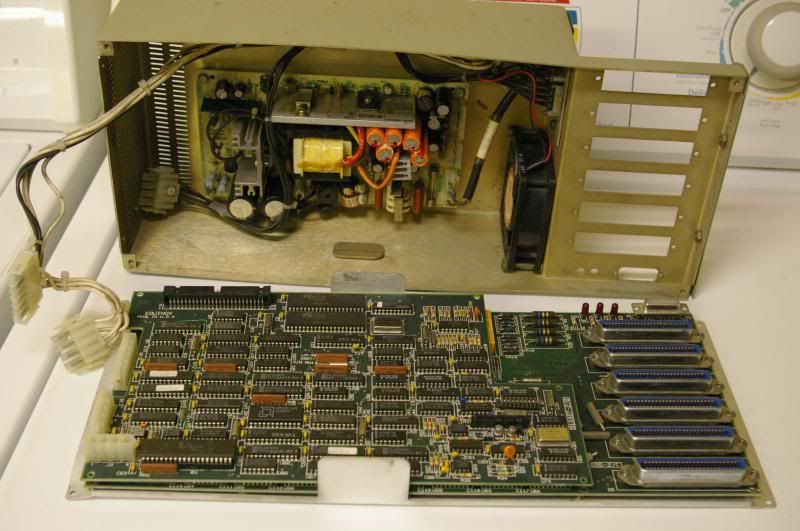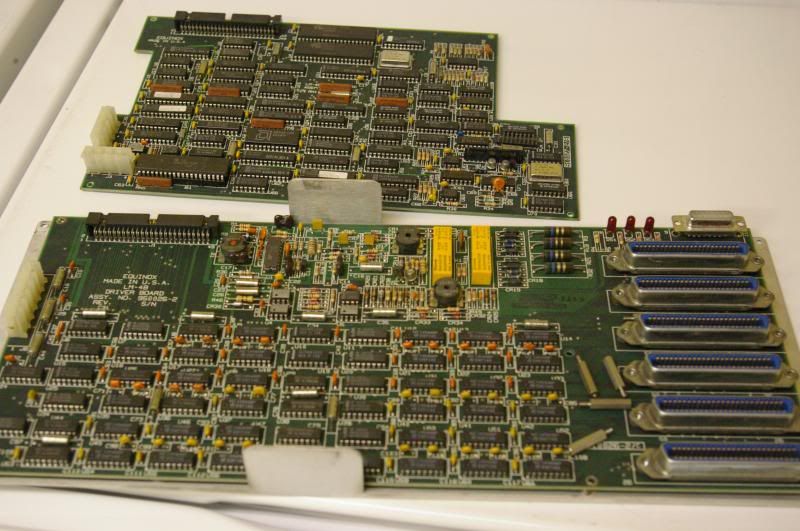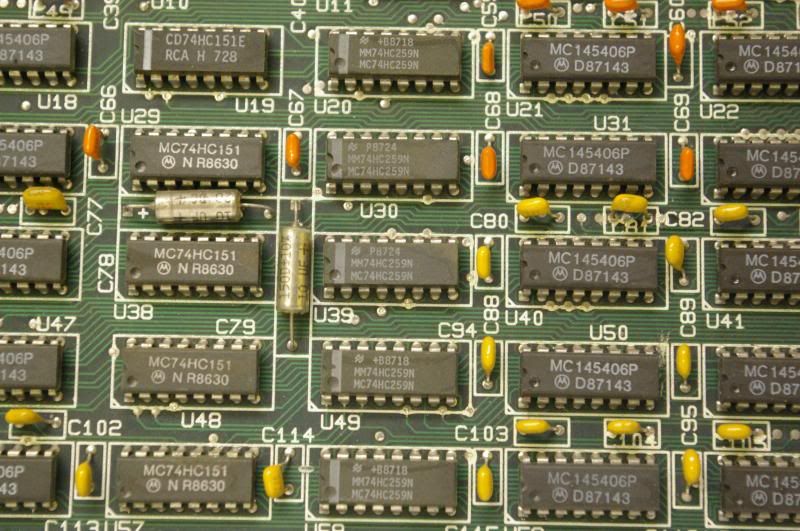A couple years ago I found this quite battered piece of phone equipment being thrown out along with a number of other boards.

It looked interesting and claimed to be a T-1 multiplexer so I brought it home and started doing some research. As is the case with most of the things I find, there was little to nothing. But I'm also not one to give up on something without a story. It wasn't until I unearthed it just recently that I searched again and found it mentioned in some old telecom magazines that Google has now digitized.
Long story short, it is a part of a digital telephone system. It multiplexes 48 telephone lines for interface to a private branch exchange (PBX). Equinox was a manufacturer of PBX, specifically digital ones for companies. This device would have been used to interface up to 48 RS-232 lines to a single T-1 line that could then be switched and processed.
...and that's about all I've got. The articles that mentioned the device were mostly talking about the viability of Equinox to provide faster data rates for modems through the device, specifically 9600 kbps (it was the late 80s). So the specific way in which it works and the pinout of the 50 pin connectors on the side are kind of lost. Although what use is an old device like this other than parts and history?
What does befuddle me is the fact that it claims that it is a T-1 multiplexer. A T-1 line by definition is supposed to only support 24 phone lines. In order to handle twice the amount of lines the system would need to either double the data rate of the transmission line or limit the number or precision of the samples.
I've come to the conclusion that it's not a T-1 line by definition. It's probably some proprietary standard that equinox used that may be similar, but adjusted to handle only digital data. I'll never stop researching though....
So now with some more information about the device there is only one more thing left to do- crack it open.
When I found the machine it was covered on the inside with a fine black powder that had been sucked into it by the internal fan. I just ran it under a stream of water to clear it off. This shouldn't have too ill an effect on it. But, upon first glimpse there are clearly three main components- a power supply, a control board and a data board(called a driver board).


Close inspection of the control board shows that it's a standard micro-controller system with a bunch of 7400 series chips to make it talk to the other circuitry. It's connected to the driver board by a ribbon cable.
The driver board is much more interesting. I originally thought that this was for an analog phone system and it wasn't until studying the chips on this board that I realized it was all digital. The bottom half of the board, with the array of chips, contains only three types of chips. First, an RS-232 driver, which tipped me off to it being for digital phones, then pairs of 1-to-8 and 8-to-1 digital multiplexers to drive and sample the serial RS-232 lines, respectively.

The top portion of the board is all the circuitry to handle the transmission line to the PBX and contains what look like a couple of hybrid networks and line drivers.
As would be assumed, the device is pretty purpose-built. Looking at the circuitry the microprocessor just cycles through the RS-232 inputs, sampling, possibly storing and then transmitting their contents down the "T-1 line." Also, simultaneously reading the "T-1 line" and distributing its data to the RS-232 lines.
Kinda boring.
I would say it could be used to fan out a computer's serial access for terminals, but it would really require a lot of work on the processor's part. Alternatively if it had used UARTs it would be more interesting, but for a phone system board that would be a bit overkill.
Despite it being rare, and because it's not too interesting, I might just scrap this for its RS-232 drivers and other chips. In an attempt to see if the power supply was salvageable I found out why the thing was trashed in the first place. The -12v rail of the power supply was only putting out -10v. So there may be some hope yet for these parts to live on.

No comments:
Post a Comment